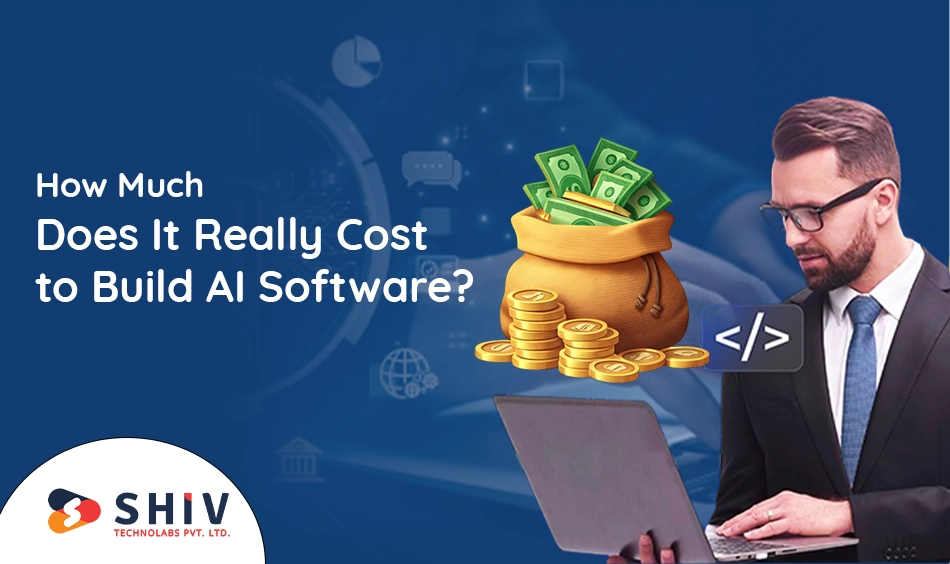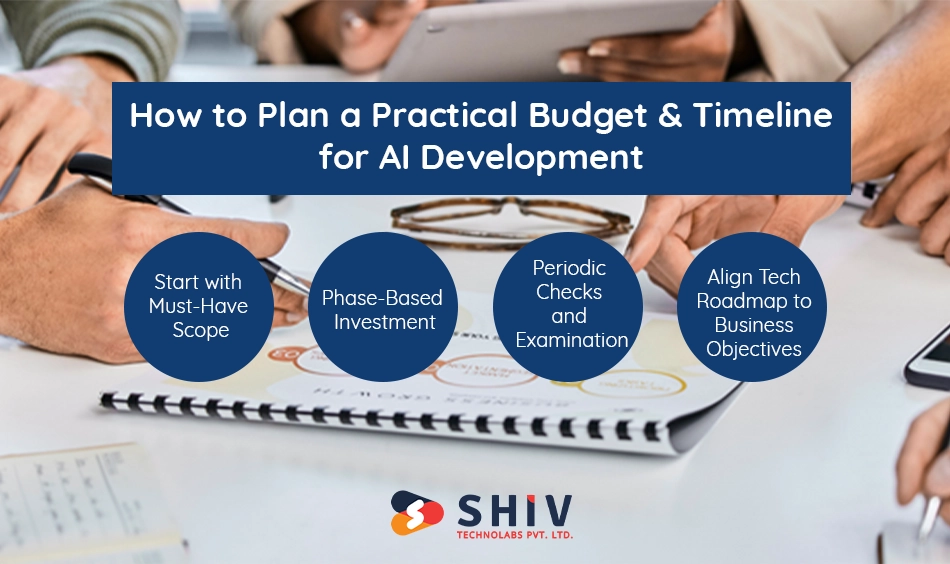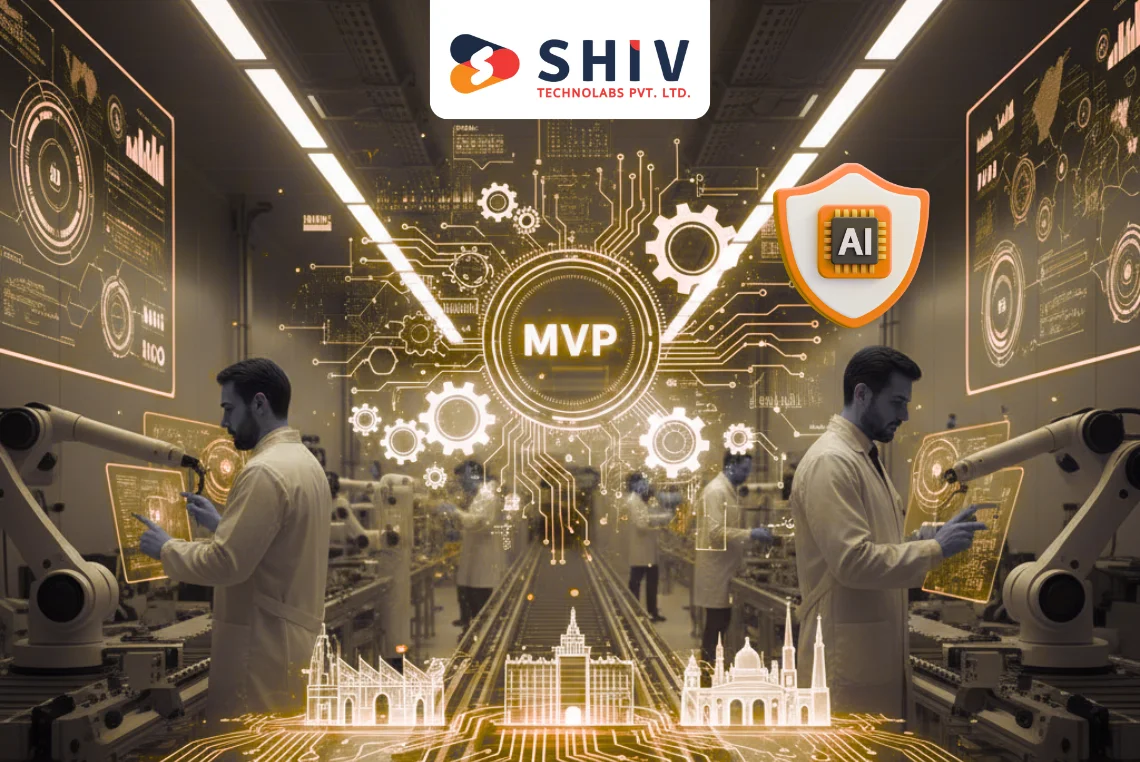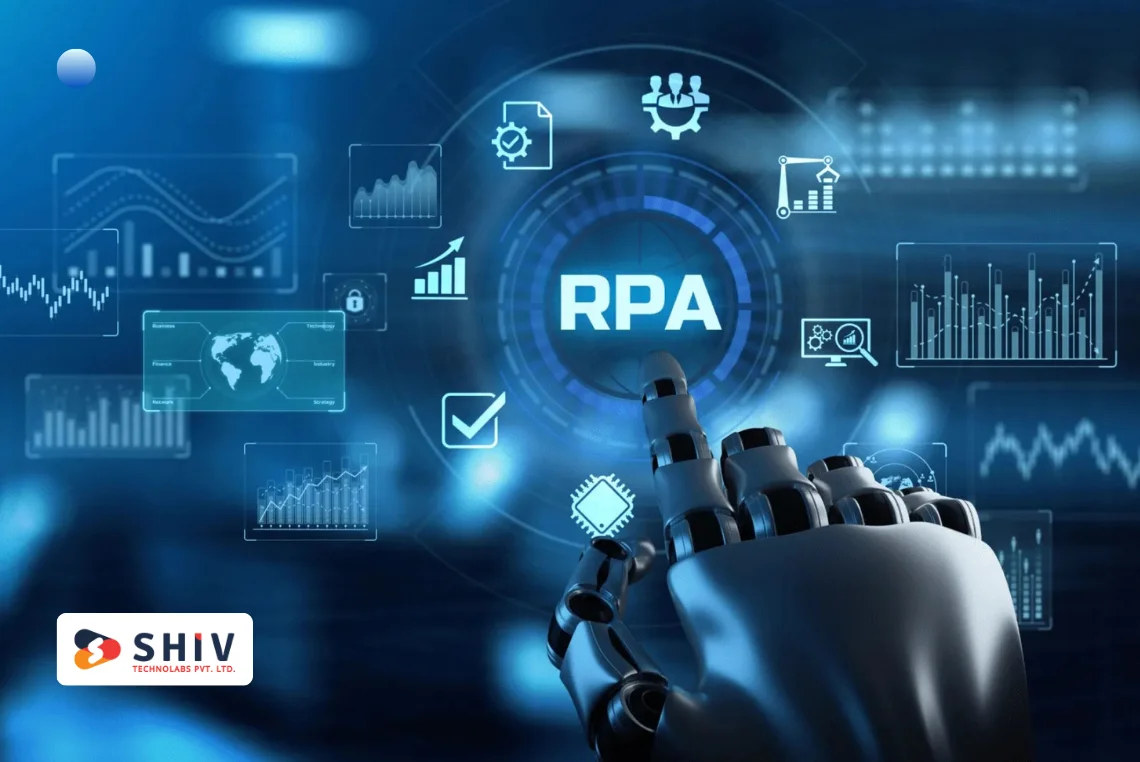Table of Contents
When artificial intelligence becomes a necessity rather than an option, the biggest question for businesses is how much AI development will cost and how long it will take.
The compound annual growth rate of the AI market in the city of the world is expected to rise by approximately 35.9% in 2025-2030. The fact that almost three-quarters of organizations are applying AI to at least one function in 2024 indicates that the tide is indeed real. However, many companies struggle to be clear about budgets and realistic timeframes, leading to budget overruns or unsuccessful builds.
It is adequate cost and budget planning for AI software development that makes the difference between success and disappointment.
We will begin deconstructing the cost drivers, general development schedules, and real-world actions you can undertake in this article, so you can plan intelligently and carry out your next AI project with confidence.
What Decides the Cost to Build AI Software?
You must be aware of the cost factors in the development of AI before you even draw up a budget. Unpacking the great drivers.
Scope and Complexity
The larger the project and more complicated the project is, the more expensive it is. An ordinary chatbot is one thing; a predictive system at the enterprise level, integrating various datasets, real-time analytics, and an individual interface, is entirely different. This variable will be critical in determining the difference in responses to the question of how much custom AI software costs.
Data Preparation and Training
Raw data does not automatically turn into AI-ready data. Cleaning, labelling, alignment, model training, dataset acquisition, and lifecycle management are costly. Many companies do not realise the extent of data preparation that can devour their budgets. That is a significant cost factor invisible in AI development.
Infrastructures and Integrations
It is likely to require infrastructure (compute, storage, streaming), and have to be integrated with existing systems (CRM, ERP, cloud, on-prem nodes). These are not insignificant costs. The more integrated and the more substantial the infrastructure, the more expensive it would be to develop AI software.
Team Skill and Tech Stack
Expertise costs. In case you require senior data scientists, machine learning engineers, backend developers, UI/UX designers, etc., clients are required to allocate money on it. The application of cutting-edge research or even sophisticated tech stacks contributes to it. This aspect is usually the distinction between small-scale applications and large-scale custom software development services.
Variables That Raise Cost
- Applying generative AI or large language models instead of logic.
- Streaming data processing, real-time predictions.
- Multi-modal (text, image, video, voice) inputs.
- Audit and security requirements, strict compliance.
- 24/7 and global scalability.
Examples: A chatbot that responds to customer questions can be relatively inexpensive due to its implementation of generic frameworks and small scale. Comparatively, a predictive system that anticipates customer churn, sends automated campaigns, and communicates with CRM and marketing platforms will be much more expensive, as all four aforementioned factors will be in play.
How Much Does It Really Cost to Build AI Software?

Now let’s get down to ranges. Although each project is different, we can establish realistic bands to regulate the budget planning for the cost of developing AI software.
| Project Type | Description | Rough Cost Range |
|---|---|---|
| Prototype / PoC | Quick validation of concept | $10,000 – $40,000 |
| Mid-Sized AI System | Core features + machine learning | $40,000 – $150,000 |
| Enterprise AI Platform | Full data + scale + integrations | $150,000 – $500,000+ |
Prototype / PoC
A prototype can be relatively cheap if you are testing an idea—could we use AI to solve X? Perhaps tens of thousands, and small in scale. You are interested in fast outcomes, few integrations.
Mid-Sized AI System
It is a build targeting production: data pipeline, model training, UI, and backend integration. Costs rise significantly. You are committing resources to the creation of bespoke software and actual products. Depending on region, scope and features, the budget might reach in the hundreds of thousands (or more).
Enterprise AI Platform
For large organisations seeking scale, reliability, real-time performance, multi-tenant support, global rollout, heavy integration, governance, and compliance, this is an all-out AI application development undertaking. Expenses are high (potentially millions of dollars, depending on industry and location). This is where many companies underestimate infrastructure, maintenance, and data expenses.
In brief, the cost of developing AI software can vary widely. The important thing is to match the scope, complexity, and infrastructure to your business objective to avoid over-engineering or under-budgeting.
How Long Does It Take to Create AI Software?
Cost is one side. Time is the other. Many companies ask how long it takes to develop AI software. We will take a look at common time ranges and major influencing factors.
Typical Duration Ranges
- Simple PoC: 4 to 8 weeks
- Mid-sized system: 3 to 6 months
- Enterprise platform: 18 months or more or 6 months.
Factors That Influence Timeline
- Data preparation: when data is spread out, contaminated or missing, time-line becomes stretched.
- Complexity of the model: it is a big difference between a simple classification and multi-modal deep learning.
- Integrations and infrastructure: linking with legacy systems, going global is time consuming.
- Regulatory and compliance fundamentals may make it slow down (audit, GDPR, governance).
- Organizational readiness: teams, processes, change management – delays on this will disturb the schedule.
Here, for example, a basic chatbot developed from a prepared dataset could be launched in 6-8 weeks. However, a predictive analytics solution with dozens of data streams, training, UI development, and deployment across the world could easily take more than a year.
What Is the Timeline for AI Software Development?
The following is an overview of the usual stages of a complete AI project – so you can develop your own timeline to develop AI application.
| Phase | Estimated Time | Purpose |
|---|---|---|
| Discovery & Planning | 2–4 weeks | Define scope, goals, KPIs |
| Data Preparation | 4–8 weeks | Collect, clean, structure data |
| Model Build | 4–12 weeks | Train, validate, refine model |
| App Development | 6–16 weeks | UI, backend, API integration |
| QA & Iterations | 2–6 weeks | Test stability, performance |
| Launch | 1–2 weeks | Deployment, monitoring startup |
These are just estimations; your real schedule would be determined by the complexity of the project, the size of the project team, readiness of your enterprise and external dependencies. Using an established AI development firm, you will be able to establish achievable milestone dates and manage the schedule.
How to Plan a Practical Budget & Timeline for AI Development

Having mapped cost drivers and timeline phases, how do you plan? The following are actual steps to incorporate into your process.
Start with Must-Have Scope
Start by establishing what is the Minimum Viable Features and Deliverables of your AI solution. What problem are you solving? Who benefits? Then add nice-to-haves to later stages. This can make you spend budget on AI development on core outcomes, and not on hypothetical features.
Phase-Based Investment
Divide your project into phases (see above). Break the budget into several phases rather than a single large budget. This allows you to prove before getting deeply into it (e.g., prototype). This staging is valuable to the investors and other stakeholders due to its minimization of risk.
Periodic Checks and Examination
Check-ins at every milestone: data preparation, model alpha, user testing, integration sign-off, etc. It will be easier to detect scope creep, budget blowout, or even timeline slip earlier, not later.
Align Tech Roadmap to Business Objectives
Make all technical deliverables connected to business worth: cost reduction, revenue boost, user experience enhancement. Please do not do cool AI unless it has a quantifiable business effect. That is what keeps your AI development budget aligned with the ROI.
Budget Planning Checklist
- State problem and business value.
- Gathering of estimate data, cleaning, labeling expense.
- Training of estimate models, calculate, cost of infrastructure
- UI/UX, backend integration, testing budget.
- Arrange continuous maintenance and model retraining.
Timeline Control Checklist
- Establish targets in each stage.
- Allocate owners and deliverables to milestones.
- Keep track of dependencies (data, infrastructure, team availability)
- Add buffer due to unexpected delays.
- Monitoring post-launch.
These steps allow you to have a clear and organized budgeting and schedule, reduce chances of overruns.
How to Reduce Cost Without Affecting Quality
You may think it would be quite expensive, but there are intelligent ways to save money while maintaining quality. The following is how to make AI development services sustainable.
Start with a Proof of Concept
Proof Before full-scale construction, prototype your design with a PoC. This assists in evaluating the technical feasibility, user response, model viability and constrained costs by avoiding going down the wrong line.
Use Pre-Trained Models
Where feasible, use existing models and frameworks rather than creating everything from scratch. It is less costly and faster to fine-tune existing models and achieve good accuracy. This makes your AI development services much cheaper.
Phase Delivery
Never run everything at once. Introduce basic functionality at the beginning, get recommendations, repeat. This makes the upfront budget easy to manage, and you end up creating what users truly appreciate rather than what you thought they would.
Eliminate Unnecessary Features Early
It is a temptation to make everything a bell and everything a whistle. Oppose, until you have proved your core value. Additional functionality is expensive, complicated, and increases the schedule and might not provide the equivalent value. Learn to focus on the essentials and build from there.
Conclusion
The moral of the story is that you cannot afford to ignore planning your AI software budget and timeline; it is mandatory. Begin with intelligent scoping of lean, stage your investment, and match every technical milestone with a business goal. That fit ensures your investment in AI software development is deliberate and quantifiable.
The experts at Shiv Technolabs are a team that assists businesses in bringing AI to life, whether in a PoC or in the launch of a larger-scale enterprise platform. As a top AI building firm, we can help you set achievable budgets and timelines and deliver a solid solution that delivers value. Ready to move forward?
Let’s talk; our group of AI engineers and code professionals is ready to collaborate with you and implement your vision with precision. Call Shiv Technolabs now and make your idea a reality.
FAQs
Q1. How much does the cost of AI software development average?
Although averages are all over the place, basic prototypes may cost tens of thousands of dollars, mid-sized systems hundreds of thousands, and large-scale enterprise systems millions. This number will depend on data, scope, and complexity.
Q2. What is the price of custom AI software as a startup?
For a startup, it is possible to start with a PoC of $10,000–$40,000 (depending on the location). When it is scaled with integrations and full features, costs increase due to infrastructure and data requirements.
Q3. Which factors influence the AI project timeline?
The major ones are data readiness, model complexity, integrations, infrastructure provisioning, and personnel expertise. Projects that use clean data and simple models run more quickly than those with heavy integrations or enterprise-scale systems, which can take months or longer.
Q4. How do I plan a budget for AI?
Begin by defining your fundamental issue, listing essential features, approximating the data and model costs, creating a stepwise plan, setting milestones, covering contingencies, and connecting every deliverable to business value. That provides you with a real budget structure.
Q5. Are AI projects overbudgeted?
Yes, and in the absence of disciplined planning, they tend to do so. The most typical causes are hidden costs (data cleaning, infrastructure, retraining), scope creep, and vague requirements. That is why it is important to have systematic budgeting and time management.






















